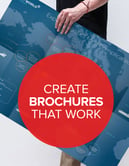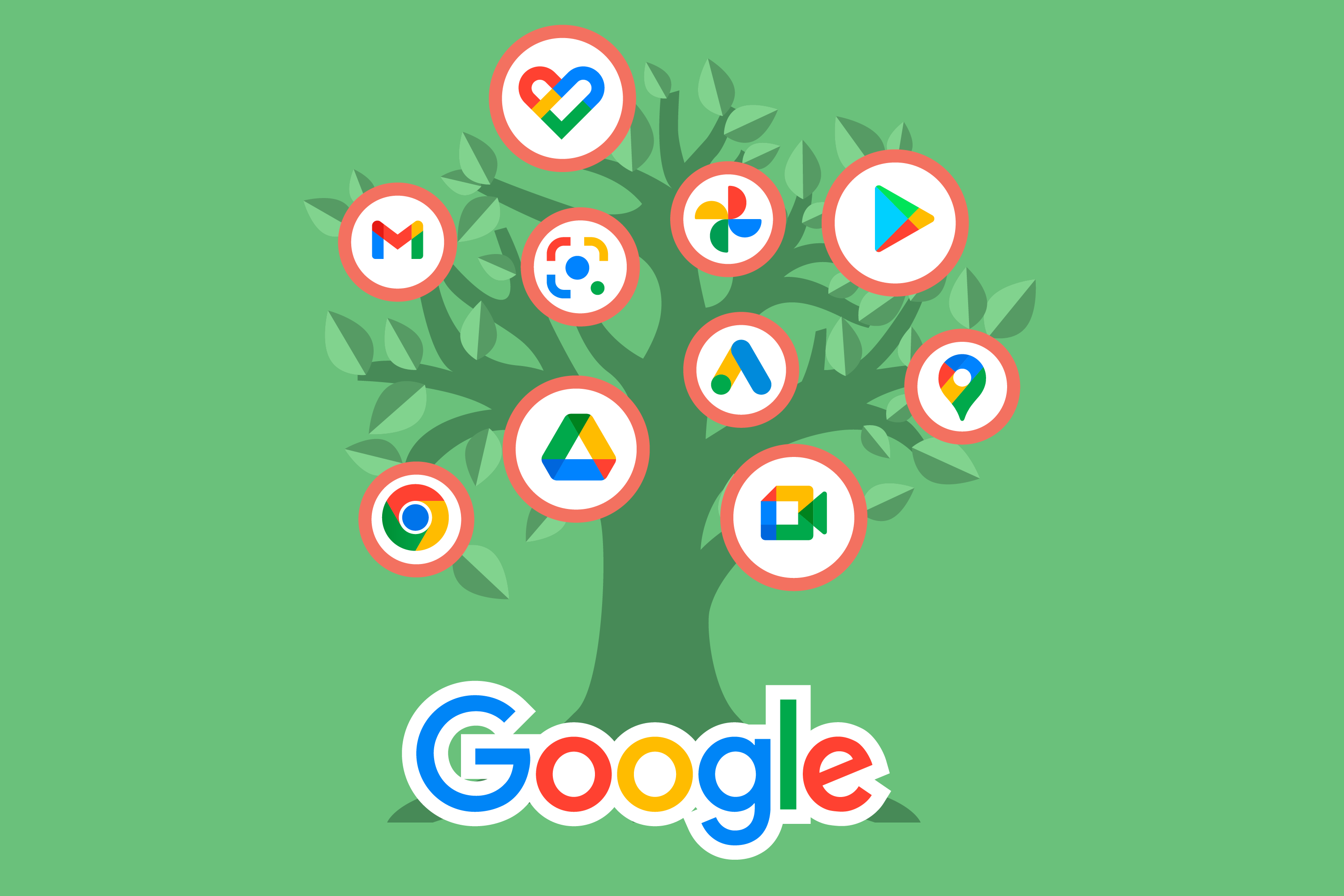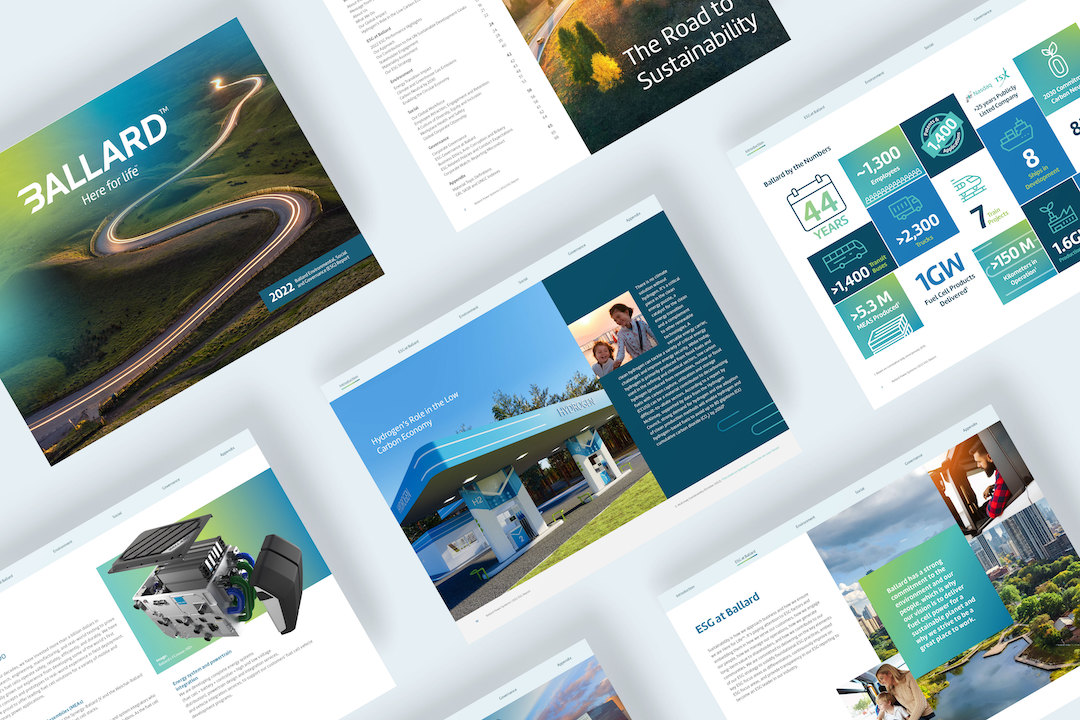OK, you’ve been tasked with developing a brochure.
Do you use a design template, or do you generate a unique solution? Both have their advantages and disadvantages.
To help you make a better decision we’ve assembled a list of the top 13 things you need to consider before producing a company brochure. By walking through this checklist, you’ll be a lot closer to creating a brochure that is on-brand, on-time and on-budget.
1. Establish the purpose
What’s it for? Who are you communicating with? When is it needed?
2. Define the elements
Plan out the elements you wish to convey in the brochure. By expressing one message/concept per page, you will define the page count (or structure) of the document.
3. Create meaningful content
The written word is essential. Great copy elevates the comprehension of your concepts. This extends to the imagery used to support the ideas you are trying to articulate. The right picture is worth a 1000 words. Personally, I’d rather look at a photo than read 1000 words to grasp a concept.
4. Keep it simple
Less is always more. You don’t have to tell the whole story. The document needs room to breathe. Jamming an overload of information into the brochure is usually done to satisfy your own yearning to communicate. It always backfires. Respect your audience. They are smarter than you think, and a whole lot busier than you can imagine.
5. Plan the brochure
If a graphic standards manual (GSM) exists, it must be consulted before starting the actual design process. It defines the many elements essential to the company’s brand – and this piece has to be “on-brand.” If a GSM doesn't exist, then you have many other challenges.
The brochure must reflect the company’s existing personality. It’s not about making it look pretty.
It’s about communicating effectively and reflecting the company’s ideals. Don’t make it look like “my little pony” if it has a Harley Davidson personality. What is the attitude you are trying to express? This will extend to the paper selection you’ll be specifying when the job is printed. (see step 8)
6. Assemble the assets
This means that a general word count for the copy has been established and the existing photography gathered. If you do have an “awesome” image that the document can be built around, you’ll need to know before anything is done. Gaps in the image library will be identified, allowing you to source appropriate photography.
7. Sketch your ideas
We require our design teams to start all projects by sketching their concepts. Really. Put a pencil to paper. Do not start doodling with the computer. Hand drawn sketches can be processed quickly, allowing you to explore numerous directions. Weak ideas wilt. Good concepts grow. Once a creative direction has been approved, only then is it time to get the keyboard clicking and the mouse moving.
8. Build appropriate proofing cycles
This includes both internal and client-facing proofs. They take longer than most people want, but are a necessary step to ensure information accuracy.
9. Make it sing
Once the brochure has been approved (both copy and imagery), now is time to finesse the elements. We call it production. Make sure there are no unusual line breaks in the copy, or widowed words just hanging by themselves. Have a look at the imagery and adjust the colour curves to make them more vibrant and impactful. A well produced brochure is easier to read and understand.
10. Choose the right paper
Congratulations, the document is now designed. But you’re not done. The paper your brochure is printed on has a tremendous influence on how the document is received. Uncoated, or soft touch? Matte finished or high gloss? Do not underestimate the tactile experience when a person holds the document and rolls the paper between their fingers.
11. Print it!
Not all printers are equal. Finding the right fit is important. This includes budget, equipment, reputation, capacity and turnaround.
12. Folding and bindery
In the printing world it is called finishing. Make sure that the document can be folded in the manner you desire. Does the page count allow for an efficient binding process? For example, uneven page counts cannot be saddle stitched – they have to be in four-page increments.
13. Delivery
How is the document delivered to the final user? Is it hand delivered? Is it mailed? Is it placed in a delegate bag at a conference? Think of printing a delicate brochure only for it to be placed in the mail and crushed by the postal sorting equipment. The value of the document is rendered when it is held by the end user. If it is beat up, dog-eared and a shadow of its former self, then it won’t deliver the impact you had imagined and will reflect poorly on your business.
Conclusion
There are many attributes that influence the success of a brochure. We hope these tips will help you produce an end product that exceeds your objectives.
Perry Boeker
Principal & Marketing Strategist A results-driven creative thinker, Perry is a marketing management professional with a proven record of achievement in Strategic Planning, Team Leadership, and New Concepts Development.






